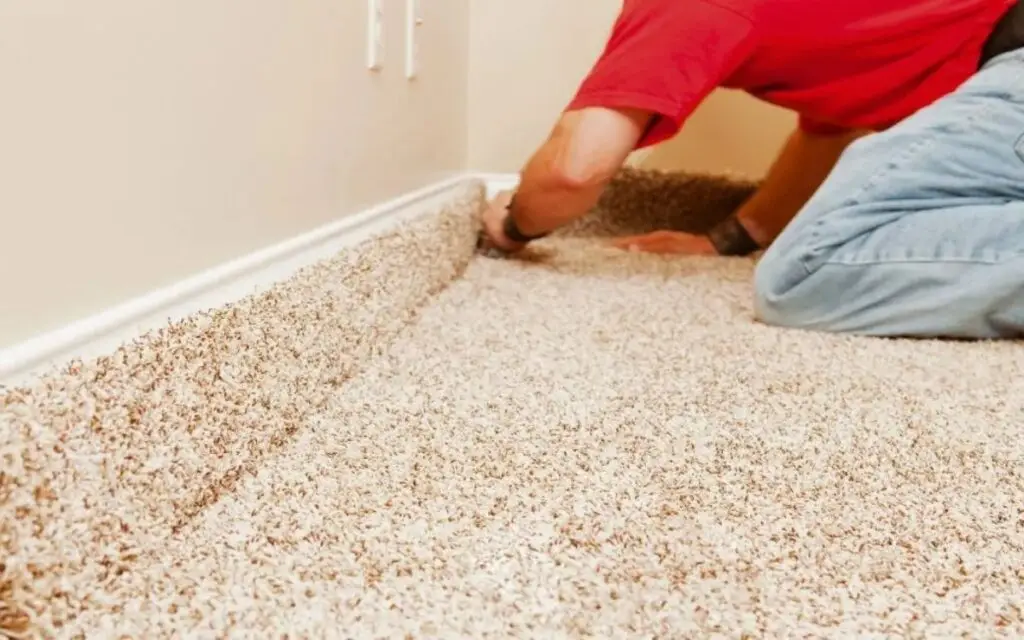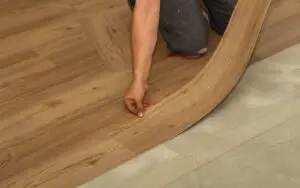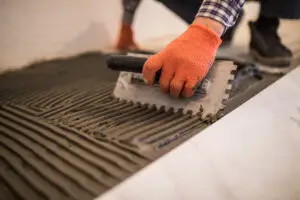Understanding the Cost Factors of Flooring
Material Costs
Carpet Options
When considering carpet, material costs can vary widely based on fiber type (nylon, polyester, wool), pile height, density, and stain resistance treatments. Lower-end options are generally less expensive but may sacrifice durability and longevity. It is always important to weigh both the upfront cost, and the long-term value of each material, before making your final decision.
Laminate Options
Laminate flooring material costs are also diverse, influenced by thickness, wear layer, water resistance, and the realism of the wood-look design. Higher-quality laminates often mimic the appearance of hardwood, and will have a higher price point, however they are still more affordable than hardwood, and can provide a great value to homeowners on a budget.
Installation Costs
Subfloor Preparation
The condition of your subfloor will have a great impact on the installation costs for both carpet and laminate, and should always be considered before beginning any project. Uneven or damaged subfloors may require leveling, patching, or repairs, before the new flooring can be installed. A professional installer can always assess the current condition of your subfloor, and provide accurate estimates for any potential repairs.
Labor Rates
Labor rates for flooring installation will vary depending on your location, the complexity of the project, and the experience of the installer. More experienced installers may charge more, but they will also often be able to complete the project more quickly, and with a higher quality end result. It is important to get quotes from several local installers, to make sure you are getting a fair price.
Removal and Disposal
The costs to remove and dispose of old flooring can often be overlooked when budgeting for a new flooring project, however, these fees can add up quickly. Be sure to include these fees in your overall estimate, so you are not caught off guard by any extra expenses. Professional installers will always provide a quote that includes these steps, so there are no hidden fees or surprises.
Long-Term Costs
Maintenance
Different flooring types have different maintenance requirements, which will affect the long-term costs. Carpet may require more frequent cleaning to maintain its appearance and hygiene, while laminate is generally easier to clean and maintain. It is essential to factor in your lifestyle, when choosing between the two, and to make sure you choose a material that you will be able to easily maintain.
Lifespan
The lifespan of the flooring is also a crucial factor to consider. Carpet typically has a shorter lifespan than laminate, especially in high-traffic areas. If you plan to stay in your home for many years, investing in a more durable flooring option, such as high-quality laminate, might be the best overall value.
Repairs
The likelihood and cost of potential repairs should also be taken into account. Carpet may require stretching or patching over time, while laminate can be prone to scratching or water damage, which can require plank replacements. It is important to think about the likelihood of these repairs, and their relative costs, before making a final decision.
Carpet vs Laminate: A Detailed Cost Comparison
Carpet
Initial Material Costs
Carpet material costs can range from $1 to $6 per square foot, depending on the fiber type, density, and style. Budget-friendly options include synthetic fibers like polyester and olefin, while higher-end options include wool and nylon, which are more durable, but are also more expensive.
Installation Complexity and Costs
Carpet installation involves several steps, including installing tack strips, laying padding, stretching the carpet, and securing it to the tack strips. While it is technically possible to install carpet as a DIY project, it often requires specialized tools, and a good amount of skill, so most homeowners choose to hire a professional installer for this type of job. Labor costs typically range from $1 to $3 per square foot.
Long-Term Maintenance and Replacement
Carpet requires regular vacuuming, and periodic deep cleaning, to remove dirt, allergens, and stains. Depending on the quality and traffic, carpet may need to be replaced every 5-15 years. The cleaning costs, and the potential costs of replacements, should always be taken into consideration.
Laminate
Initial Material Costs
Laminate flooring material costs can range from $1 to $5 per square foot, depending on the thickness, wear layer, and water resistance. Budget-friendly options often mimic the look of wood or tile, and provide a cost effective alternative to other types of materials.
Installation Complexity and Costs
Laminate flooring installation is relatively straightforward, and is often considered a good choice for DIYers. The planks typically have a click-lock system, which makes them easy to install, with minimal tools. Labor costs for professional laminate installation typically range from $1 to $4 per square foot.
Long-Term Maintenance and Replacement
Laminate flooring is relatively easy to clean, and maintain, and will only require sweeping and mopping with a damp mop. It is important to avoid using too much water, as this can seep into the seams and cause damage to the laminate. With proper care, laminate can last for 10-20 years, however it may not be able to be refinished like hardwood.
DIY vs Professional Installation: Cost Implications
DIY Savings
Material Cost Control
With a DIY installation, you have more control over the material costs, and you can choose the least expensive materials that meet your needs. You can also take advantage of sales, and discounts, to save even more money on the project.
Reduced Labor Expenses
The primary benefit of a DIY installation is that you will avoid all labor expenses, which can often be a significant part of the overall project cost. If you are able to perform the job yourself, this will result in great cost savings, however, it also comes with a number of risks, that should always be considered.
Risks of DIY
Potential Mistakes
DIY flooring installations are very prone to errors, such as improper subfloor preparation, misaligned planks, and incorrect cuts. These types of errors can reduce the lifespan of the floor, and can even require you to hire a professional to come in and correct them, which can actually cost more than hiring a professional from the beginning.
Tool and Equipment Costs
Many DIY projects will require you to purchase, or rent, tools. These tool rentals, or purchases, can quickly add up, and are another cost that most homeowners do not consider before beginning a DIY project. Professional installers, already have all of the tools that are needed, which will save you both time and money.
Time Investment
DIY flooring installations often take much more time than anticipated, especially if you are not experienced with this type of work. The time you spend on the project, is time that you could be spending with your family, or at your job, and this is always something that should be taken into consideration.
Professional Benefits
Expertise and Efficiency
Professional installers bring expertise and efficiency to the project, and they will be able to complete the job more quickly and correctly, than most homeowners can. They will also have the knowledge, and experience, to handle all of the potential problems that can arise during an install, which will help to avoid costly mistakes.
Warranty and Guarantee
Professional installers also offer warranties, and guarantees, on their work, which will provide you with peace of mind, and will ensure that you are protected from any unexpected problems. This is not something you can get with a DIY install, and is one of the main reasons to hire a professional installer.
Case Studies: Cost-Effective Flooring Projects
Example of a Budget-Friendly Carpet Install
A homeowner chose a budget-friendly polyester carpet for three bedrooms, and hired a professional installer to complete the job. The installer used efficient techniques, and completed the project within one day, resulting in a cost-effective flooring solution that fit the homeowner’s budget, while also providing them with a high-quality installation.
Example of an Affordable Laminate Project
Another homeowner installed laminate flooring in their living room, and chose a mid-range laminate that mimicked the look of hardwood. The project was installed by a professional who prepared the subfloor correctly, and completed the install quickly, which resulted in a beautiful and affordable new floor, that added a lot of value to their home.
FAQs & Answers
Generally speaking, it is often more affordable to install carpet than laminate flooring, as the material costs for carpet are often lower. However, the installation costs can vary depending on the complexity of the job, and the condition of the subfloor. Professional installers can provide accurate estimates for both options, and help you choose the best flooring for your budget.
The primary material cost differences between carpet and laminate flooring depend on the quality and type of each material. Basic carpet options are often less expensive than basic laminate, but the higher quality options often have similar prices. It is always wise to compare the different grades of materials before making a final choice. Professional flooring installers can always offer expert advice on the different types of materials, and which will provide the best value for your money.
Installation costs will often vary based on the complexity of the installation, with more complex projects having a higher labor cost, as it will take longer for installers to complete the job. However, both carpet and laminate are very common, and it is usually easy to find a professional installer who can complete the job quickly, and efficiently. Professional installers will also offer a guarantee on their work, which will give you added peace of mind.
When considering the long-term costs of carpet and laminate, you should always take into consideration the maintenance requirements of each material. Carpet may require more frequent cleaning, and may need to be replaced sooner than laminate, especially in high-traffic areas. Laminate is often easier to clean, and more resistant to stains, and moisture, however, it may not last as long as other types of flooring, such as hardwood, or tile. It is important to always discuss all of the pros and cons with a professional before making any final decisions.
There are several situations where carpet installation might be more cost-effective than laminate, such as in bedrooms, where the low-cost and added comfort of carpet, may be more important than a super-durable floor. Laminate is often better for high-traffic areas, where durability, and ease of maintenance, are essential. A professional installer can assess all of your needs, and give you expert advice, that will fit your specific situation, and budget.





